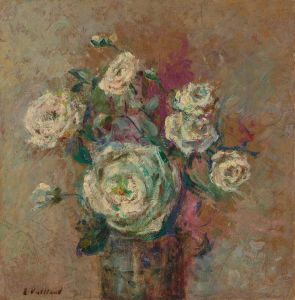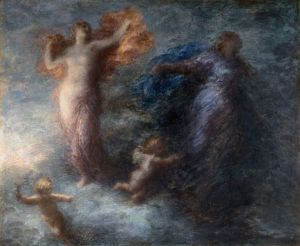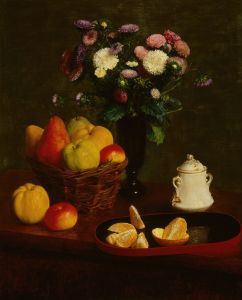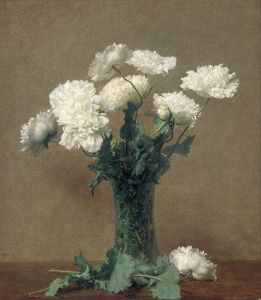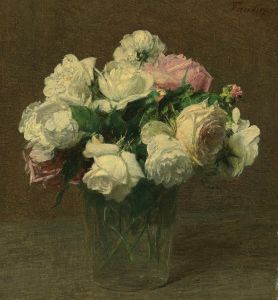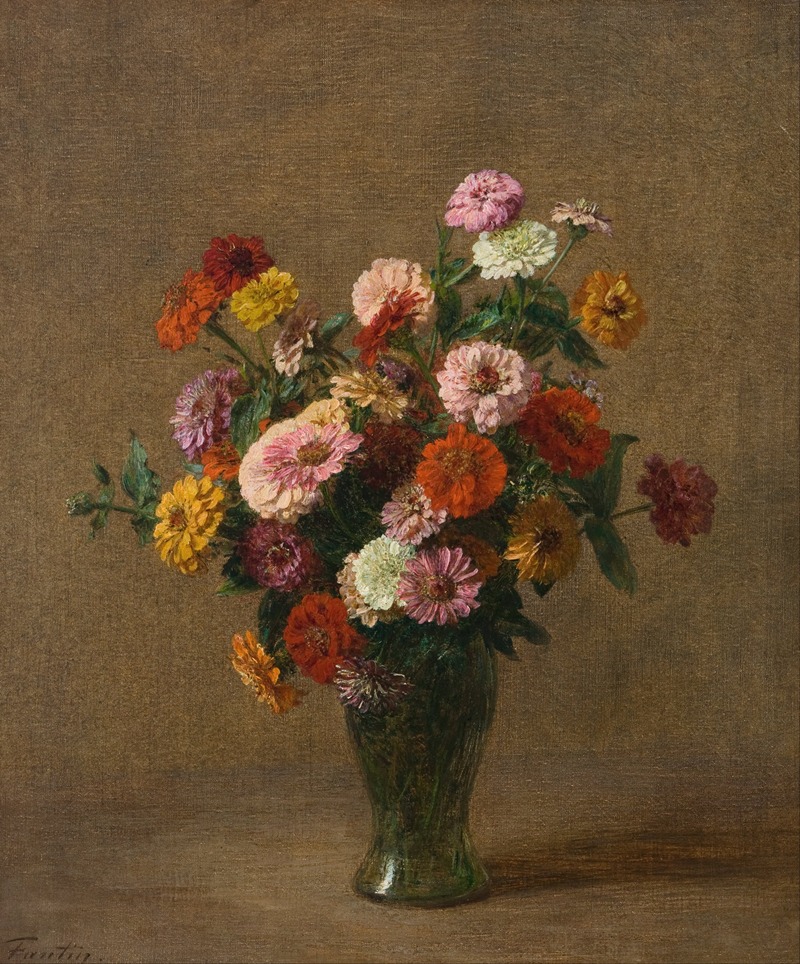
Zinnias
A hand-painted replica of Henri Fantin-Latour’s masterpiece Zinnias, meticulously crafted by professional artists to capture the true essence of the original. Each piece is created with museum-quality canvas and rare mineral pigments, carefully painted by experienced artists with delicate brushstrokes and rich, layered colors to perfectly recreate the texture of the original artwork. Unlike machine-printed reproductions, this hand-painted version brings the painting to life, infused with the artist’s emotions and skill in every stroke. Whether for personal collection or home decoration, it instantly elevates the artistic atmosphere of any space.
Henri Fantin-Latour was a renowned French painter known for his exquisite still life paintings and portraits. Among his celebrated works is the painting "Zinnias," which exemplifies his mastery in capturing the delicate beauty of flowers. Fantin-Latour was born on January 14, 1836, in Grenoble, France, and he became a significant figure in the art world during the 19th century. His work is often associated with the Realism and Impressionism movements, although he maintained a unique style that set him apart from his contemporaries.
"Zinnias" is one of Fantin-Latour's many floral compositions, a genre for which he is particularly famous. His still life paintings are characterized by their meticulous attention to detail, subtle use of color, and the ability to convey the texture and vibrancy of flowers. In "Zinnias," Fantin-Latour captures the essence of the zinnia flowers with remarkable precision and sensitivity. The painting showcases a bouquet of zinnias arranged in a simple vase, highlighting the natural beauty and diversity of the blooms. The artist's skillful use of light and shadow adds depth and dimension to the composition, creating a sense of realism that draws the viewer into the scene.
Fantin-Latour's approach to painting flowers was influenced by his admiration for the Dutch still life painters of the 17th century, such as Jan van Huysum and Rachel Ruysch. Like these artists, he sought to depict flowers with a high degree of realism while also imbuing them with a sense of life and vitality. His floral paintings are often noted for their serene and contemplative quality, inviting viewers to appreciate the simple yet profound beauty of nature.
Throughout his career, Fantin-Latour maintained a close relationship with several prominent artists and musicians of his time, including Édouard Manet, James McNeill Whistler, and the composer Hector Berlioz. His connections with these figures influenced his work and helped to establish his reputation in the art world. Despite his associations with the Impressionists, Fantin-Latour preferred a more traditional approach to painting, focusing on the careful observation and representation of his subjects.
"Zinnias" and other floral paintings by Fantin-Latour were highly sought after during his lifetime and continue to be appreciated by art enthusiasts today. His ability to capture the ephemeral beauty of flowers with such precision and elegance has earned him a lasting place in the history of art. Fantin-Latour's works are held in numerous prestigious collections around the world, including the Musée d'Orsay in Paris and the National Gallery in London.
Henri Fantin-Latour passed away on August 25, 1904, in Buré, France, leaving behind a rich legacy of paintings that continue to inspire and captivate audiences. His dedication to his craft and his ability to find beauty in the everyday have made him a beloved figure in the world of art, and "Zinnias" remains a testament to his exceptional talent and vision.





